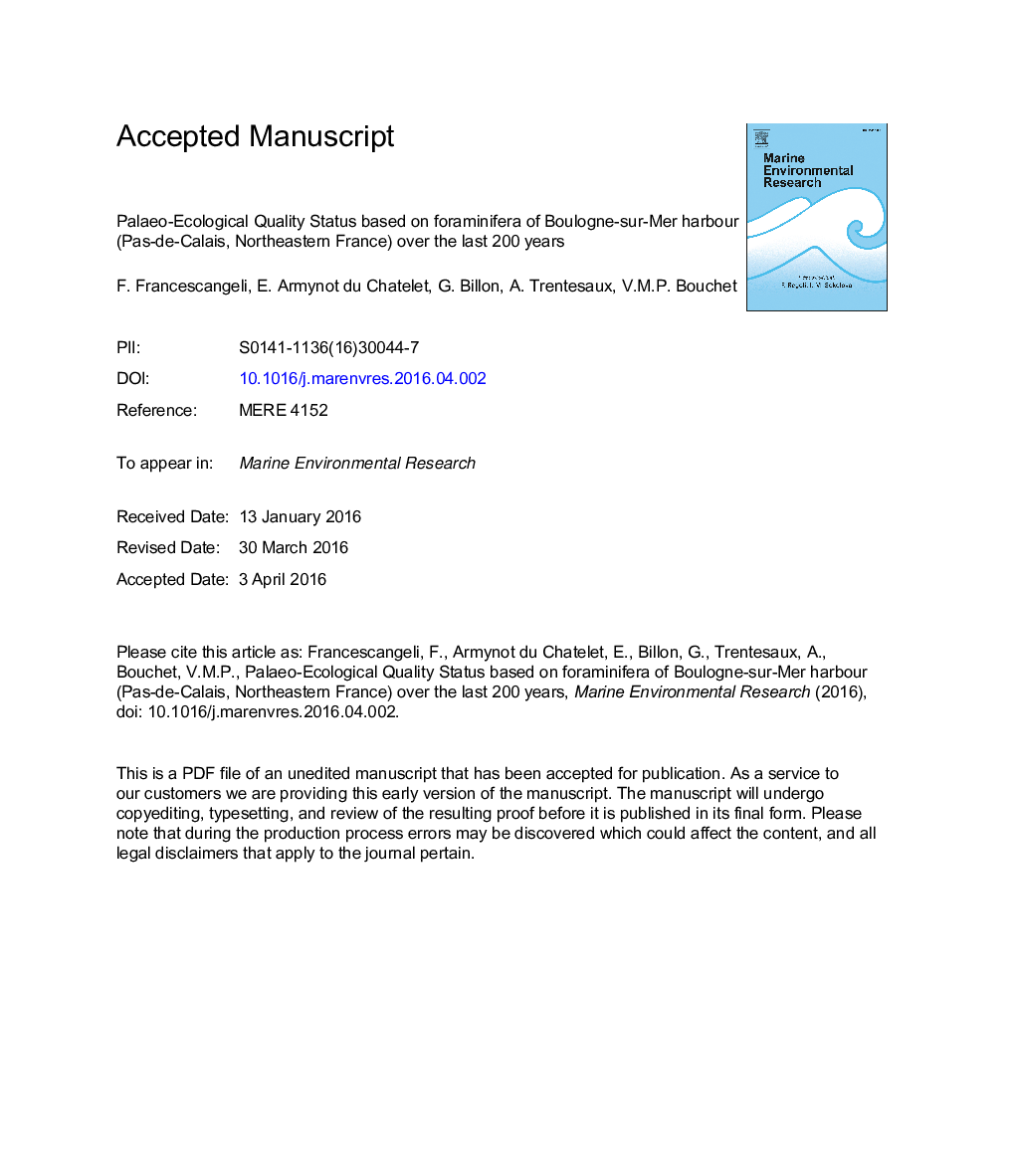| Article ID | Journal | Published Year | Pages | File Type |
|---|---|---|---|---|
| 6387603 | Marine Environmental Research | 2016 | 46 Pages |
Abstract
Over the last centuries, coastal areas have experienced dramatic degradations of their environmental quality, which has led to a huge reduction of marine biodiversity. The objective of the present study was to use geochemical parameters and benthic fossil foraminifera to assess environmental changes that have occurred over the last 200 years in a harbour area (Boulogne-sur-Mer, Northern France) heavily modified by human activities. A multidisciplinary approach including major and trace metals, grain-size, total organic carbon and benthic fossil foraminifera, has been performed on a 33-cm long core. The dating was carried out using the activity of 210Pb and 137Cs. Embayment of the area and increase of trace metals concentrations induced a shift in benthic communities. Human activities modified a sandy nearshore bank, colonized by typical marine foraminiferal species, such as Cribroelphiudium excavatum, into a sheltered environment, dominated by brackish end-members, such as Haynesina germanica. Along the sedimentary record, the interaction between meiofaunal and geochemical elements made it possible to distinguish between a pre-impacted period and an industrial period. The upper part of the core reflects better ecological conditions, indicating an environmental recovery. Our results provide baselines for future environmental bio-monitoring in the area.
Related Topics
Physical Sciences and Engineering
Earth and Planetary Sciences
Oceanography
Authors
F. Francescangeli, E. Armynot du Chatelet, G. Billon, A. Trentesaux, V.M.P. Bouchet,
